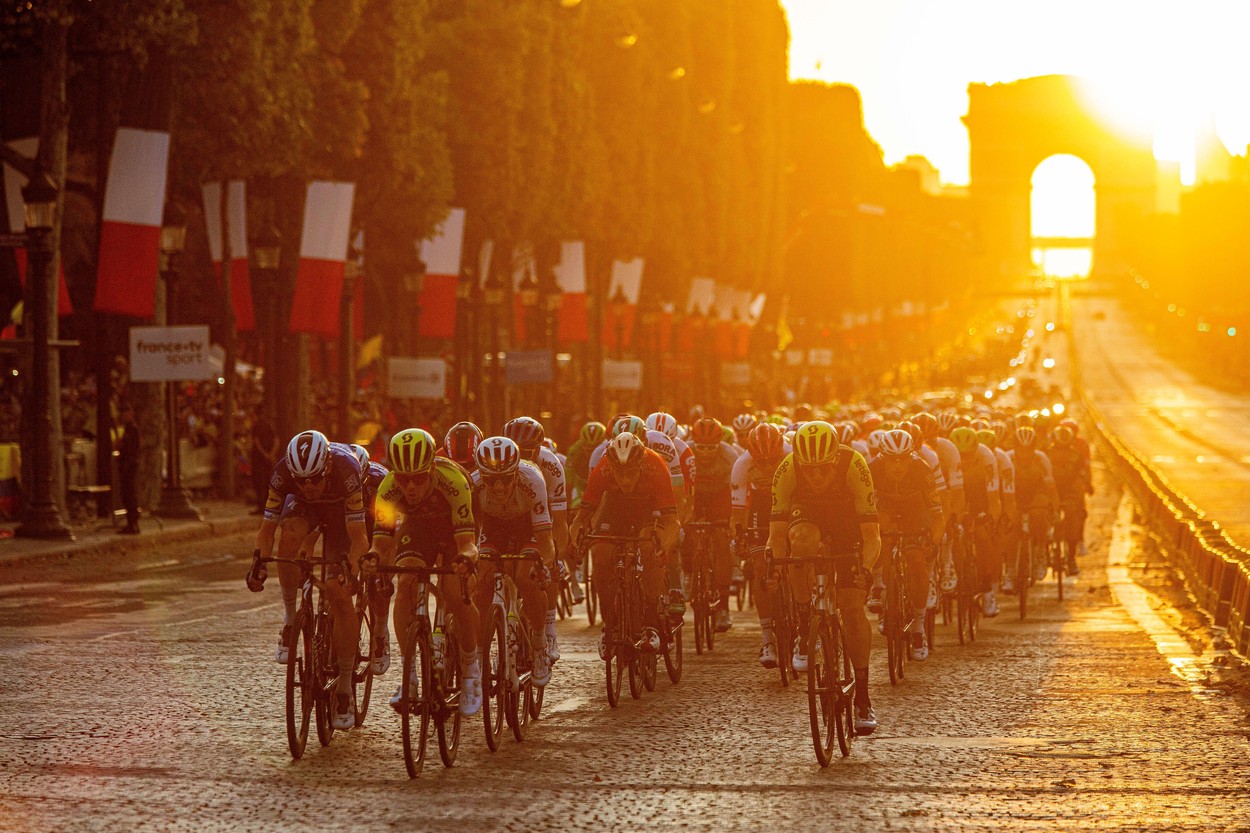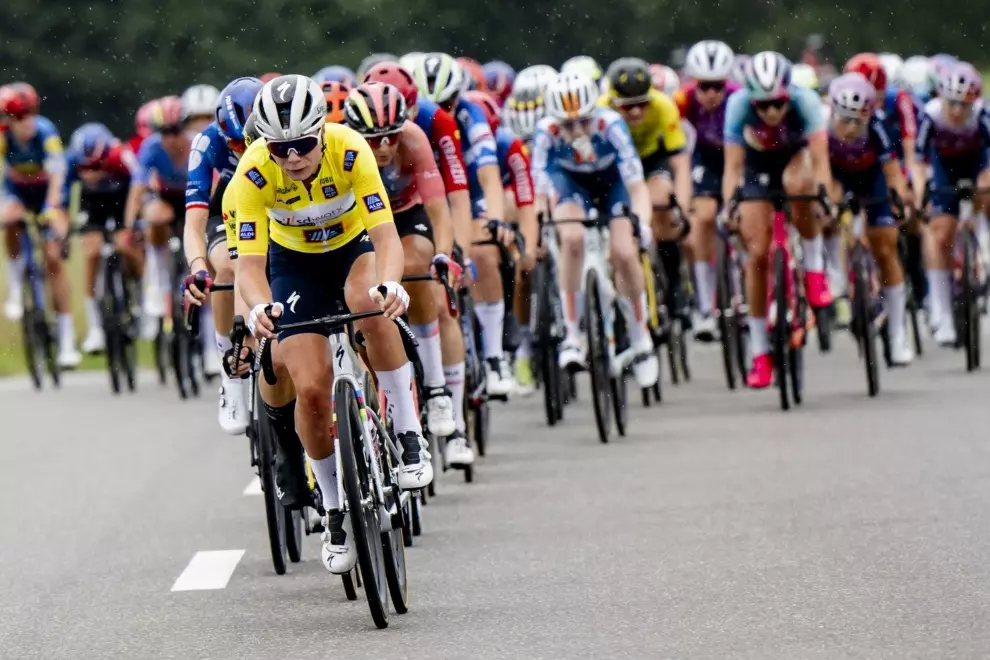What influences the formation and shape of the peloton?
A recently published study that was started four years ago by professor Tadd Truscott of Utah State University and Jesse Belden from the Naval Undersea Warfare Center aims to describe and better understand the behaviour of the peloton. The researchers analysed hours of aerial footage from the 2016 Tour de France and found that motion from the front of the pack appeared to pass through the peloton in a network fashion, with individuals reacting to one another in a relatively short time and space. That made them speculate that there’s more at play than just aerodynamics.

“Tour de France riders are often only a few centimetres apart from neighbours on all sides,” said Truscott. “Our image analysis revealed that cyclists align in patterns within a plus or minus 30-degree arc corresponding to the human near-peripheral visual field. This helps them safely react to changes or disturbances from neighbouring riders.”
Riders don’t align in optimal aerodynamic drafting positions
It has been shown that peloton formations can substantially lower individual rider energy expenditure. But the analysis of aerial footage showed that riders generally don’t align in optimal aerodynamic drafting positions, which suggests that there are other factors at play.
https://www.instagram.com/p/B0fXJR_I1XA/
Vision is a major factor that shapes the peloton
The researchers observed that the peloton shape changes throughout a stage. It starts wide and elongates as the stage progresses. Also, most stages usually start slower and speed up as they near the end, requiring increasingly higher efforts from riders. The researchers observed that these two factors, an elongated peloton and a harder effort towards the end of the stage, correspond to a narrower field of vision. As riders’ heart rates increase, their field of vision narrows because of the limitations of the human body. This decreases the field of perception, which leads to a stretching out of the peloton.
“In other words, the visual ability of individual riders governs the underlying shape, response to changes in the road and spacing between individuals,” said Truscott.

What did we learn from this?
This information is probably not particularly useful for the Tour riders themselves. They have developed instincts for how to interact in a peloton through thousands of hours of practice. But the researchers say that their findings will help formulate new ways of predicting collective behaviour. For example, this research could have real implications for directing a network of individual machines such as autonomous cars. Perhaps the Tour de France peloton will unintentionally contribute to better road safety when autonomous vehicles become the norm.




